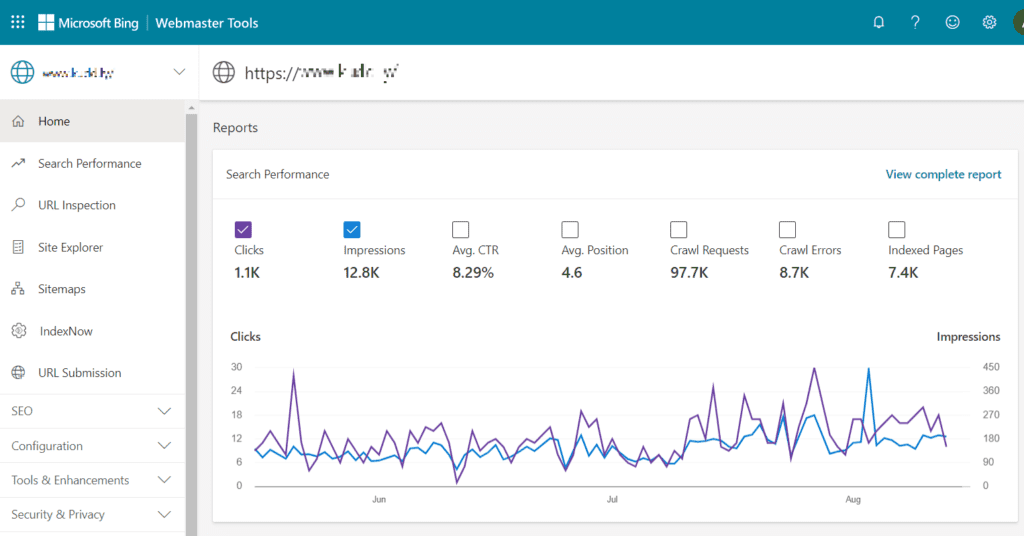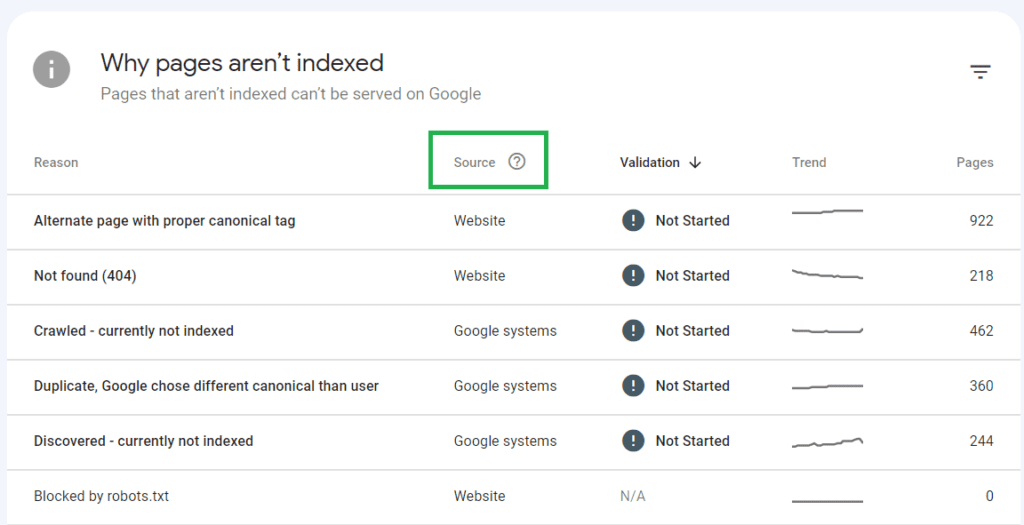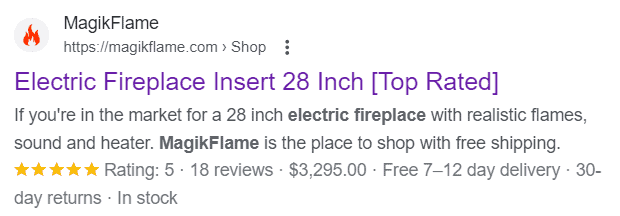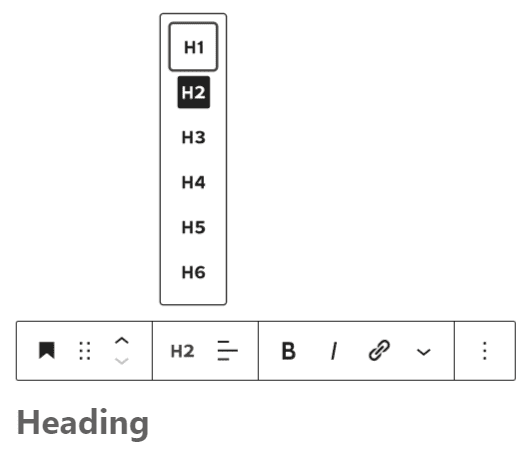The following SEO checklist contains all the necessary information to help you improve your website rankings and increase organic traffic.
The checklist covers basic and advanced SEO best practices to optimize your website for search engines.
Whether you’re an experienced practitioner or a beginner, this guide can help you improve your SEO.
Set up basic SEO tools
Start by setting up basic SEO tools – they are all free. The following tools give you essential information about the performance of your site in search results.
Google Search Console
Google Search Console (GSC) is a must-have SEO tool that contains so many useful features that it would take a separate article to list them all:

So be sure to set GSC as it is a very important item on the SEO checklist.
Google Analytics
Google Analytics (GA) is another great and free tool that is useful for SEO as well as for digital marketing in general.

Tip: you can also associate your GA and GSC accounts. This gives you access to Search Console Insights – a feature that combines the most useful data from Search Console and Analytics.
Bing Webmaster Tools
Bing Webmaster Tools from Microsoft is a free tool that is similar in functionality to Google Search Console:

Technical SEO
Setting up technical SEO is necessary to ensure that search engines are able to find, crawl, understand, and index your website. This is the foundation of any successful SEO campaign.
Let’s learn a checklist of essential technical SEO best practices.
Create a robots.txt file
robots.txt is a file that instructs search engines on what sections of your website they can crawl. You can find your robots.txt file at the following URL:
yourwebsite.com/robots.txt
Every content management system has its own default robots.txt file. In many cases, you don’t need to modify it, but it depends on the website.
If you want to edit your robots.txt file, don’t block from crawling important pages on your site or folders that are critical to page rendering.
Create and submit a sitemap
A sitemap file should list all the key pages of your website. This will make it easy for search engines to find and index them.
Your sitemap file can usually be found at one of the following URLs:
yourwebsite.com/sitemap.xml
yourwebsite.com/sitemap_index.xml
For custom-built websites, you need to create a sitemap manually or generate it using various tools.
When your sitemap is ready, submit it to Google and Bing via Search Console and Webmaster Tools:

Make sure your website has a good architecture
This is a crucial item on the technical SEO checklist. A site’s structure should be such that search engines can easily discover and crawl all pages of the site.
Ideally, you need to structure your website so that web crawlers can access all pages in 3-4 clicks from the homepage.
A pyramidal site structure is well suited for this purpose. This structure allows crawlers to find all site pages easily:

Make sure your URLs are SEO-friendly
Here are the most important SEO best practices for URLs:
- Page URLs should be human-readable – this is the main rule.
- Do not use spaces and special characters such as
$or!in URLs.
- Separate words in URLs using hyphens (
-) instead of underscores (_)
Check for possible crawling and indexing issues
Check the “Indexing” report in Google Search Console. Ensure Google hasn’t encountered any issues while crawling or indexing your website:

You can also check the “Not indexed” section of the report and view the reasons why some pages are not indexed:

Finally, you may also find that some pages are “Indexed though blocked by robots.txt”:

If some important pages of your website are not indexed for one reason or another, you need to understand why and fix the problems.
Make sure your website is responsive and mobile-friendly
As most Google searches happen on smartphones, a mobile-friendly website is essential. But ideally, your website should have a responsive web design.
This means you will see the same content and layout, regardless of the device you are using (desktop, laptop, tablet, or smartphone).
You can check your website for mobile friendliness using various tools such as the Bing testing tool:

If some pages have mobile usability issues, learn how to fix them.
Secure your website with HTTPS
If your website does not use HTTPS, most modern web browsers will display a “Not secure” warning. This warning will discourage users from staying on your website and returning in the future:

So make sure your website is secured with HTTPS and that your SSL certificate is valid.
Improve Core Web Vitals
Core Web Vitals are three indicators used by Google to test whether your page provides a good user experience.
You may check how many pages of your site have good Core Web Vitals in Search Console:

If your site runs on WordPress, you can learn how to improve Core Web Vitals in this guide.
Add Schema markup
Schema markup improves the visual appearance of your web pages in search results. For example, this is how a page with Product markup appears in Google Search results:

If you have a WordPress website, here you can learn how to add Schema markup.
Consolidate duplicate content
Duplicate content can appear on your website for various reasons, and there is no universal advice on how to deal with it. The most common ways to fix duplicate content are:
- canonicalizing duplicate pages;
- adding the
noindexmeta tag; - 301 redirecting duplicate pages;
- deleting duplicate pages.
Fix low-value pages
Low-value pages are those that provide no value to your website visitors and/or search engines. This includes but is not limited to archive pages, outdated articles, empty pages, various tags, etc.
If you have a lot of low-value content on the site, it may negatively impact the entire site’s rankings. To fix low-value pages, you may either add the noindex meta tag to them or simply delete them.
Choose a preferred version of your domain
Due to server configuration, your website may be accessed both with or without www:
https://website.com
https://www.website.com
Choose a preferred version of your domain – you can select any version you want. Set up a permanent 301 redirect to the preferred version.
Check for other possible technical SEO issues
Your website can have other less important technical SEO issues that are also worth paying attention to:
- Orphan pages
- Broken links
- Mixed HTTP/HTTPS content
- Redirect chains or loops
Use a website crawler such as Screaming Frog SEO Spider to detect the above technical SEO issues.
On-page SEO
On-page SEO refers to the practice of enhancing a page’s elements that are important for search engines. You should do on-page optimization for each page separately.
Let’s learn a basic checklist of how to do on-page SEO the right way.
Optimize titles and meta descriptions
Page title tag and meta description are elements that are displayed in search results as a summary of page content:

They provide an opportunity to introduce your page to users. Furthermore, they can entice users to click on your page in the search results.
You can learn SEO best practices for titles and meta descriptions in this guide.
Add internal links
Internal links encourage users to explore other pages on the website. So make sure each page has a few links to other pages of the site.
Add external links where applicable
Links to authoritative external sources increase the credibility of the information on the page.
External links are essential when the page involves medical, financial, or other topics that impact your health, safety, and financial security.
Add the ‘nofollow’ attribute to all paid links
Be sure to add the rel=nofollow or rel=sponsored attributes to all paid links. Otherwise, Google may penalize your site because paid links violate Google guidelines.
Use descriptive anchor text
Anchor text is the clickable text that is used to link to another page in internal or external links:

The anchor text gives users and search engines an idea of what the destination URL contains. Good anchor text should be concise and relevant to the linked page.
Use headings on a page
Headings are important for organizing content. If a page has headings, users can quickly find on the page what they are looking for. Without them, the page would be a long block of text.

Avoid boilerplate content
Boilerplate text is a piece of text that is used on many pages of the site. If boilerplate content constitutes a significant part of a page’s content, it will negatively impact the page’s rankings.
Write alt attributes for images
alt attribute or alternative text is the text used to describe the image. It helps Google recognize the image.
Also, alt attributes are important for people with visual impairments – screen readers use them to describe the image to the user.
Content SEO
Content SEO should be an integral part of your SEO strategy. Here is a checklist on how to create SEO-friendly content.
Find good keywords
Choosing the right keywords is critical to whether your page(s) will generate traffic from search engines or not. Consider the following characteristics of a keyword:
- Keyword intent
Keyword intent is the reason why the user enters this particular search term. For articles, choose keywords with informational intent. For any other “money” pages – with commercial intent.
- Search volume
The higher the search volume for a keyword, the more traffic you can potentially generate.
- Keyword difficulty
Keyword difficulty shows how hard it is to rank for a keyword. The higher this value, the more effort you need to put in to achieve a high ranking for the keyword.
Do not copy content from other sources
This is another essential item on the SEO checklist. To rank high on Google, your page must have unique content. Do not copy any content from other pages of your site or from external websites.
Make your content comprehensive
Comprehensive content is one that covers a topic in detail. Sometimes it takes 5,000 words to cover a topic in detail, sometimes 500 words.
But keep in mind that long content does not always mean comprehensive:
Use the target keyword a few times on the page
Include your keyword a few times on the page to show Google that your content is truly about this subject:

You just need to mention the keyword where it is relevant and makes sense.
Avoid keyword stuffing
Don’t repeat your target keyword too many times on a page as it can negatively impact the page’s ranking.
There is no ideal keyword density, but the rule of thumb is that if your keyword density is above 2.5%, you are at risk and you should probably reduce it.
Use semantically related words
Related words and phrases in your content make it easier for Google to match your content to a relevant search query.
For example, I want this page to rank for the search term “SEO checklist”. For this purpose, this page should include related keywords such as “technical SEO”, “backlinks”, etc.
To find semantically related words, you can use specialized software such as the Yoast SEO plugin.
Specify the author of the content
Indicate the author(s) of the content and describe their experience in this area. This will increase user confidence in your content.
Make your content easy to read
Text readability is a complex concept. It involves metrics such as paragraph and sentence length, transition words, use of headings, and more.
If you use WordPress, Yoast SEO allows you to check the readability of your content and provides necessary recommendations for improvement:

Use visual illustrations
Images, infographics, relevant screenshots, and other multimedia make your content easier to understand.
Visual illustrations also break up your content and keep it from looking like a lot of written text.
Avoid keyword cannibalization
Keyword cannibalization occurs when you have two or more pages on your website that are optimized for the same keyword.
In this case, your pages compete against each other in search results. Consequently, none of the pages rank as well as they should.
Off-page SEO
Off-page or off-site SEO refers to activities outside of your site aimed to improve search engine ranking. Here is an elementary off-page SEO checklist.
Build backlinks to your site
Relevant backlinks from authoritative websites can significantly enhance the website’s overall ranking.
The main rule in link building is that quality is more important than quantity. There are many link-building methods: broken link building, resource pages, link reclamation, and dozens of others.
Create and optimize Google Business Profile
Google Business Profile (formerly known as Google My Business) is another free service from Google. It showcases the most important info about your business directly in search results.
You can create a profile on Google if your company has a physical address that your customers can visit.
Collect off-site customer reviews
Last but not least item on the SEO checklist. Google and other search engines use off-site signals to evaluate the authority, trustworthiness, and relevance of your brand.
Improve off-site signals by collecting reviews on third-party platforms such as Trustpilot or social media such as Facebook.
Conclusion
Implementing SEO best practices outlined in this checklist can significantly enhance your search rankings and boost your online visibility.
I hope this guide helps you achieve your desired SEO goals.
A few comments, if you don’t mind…
Among the essential tools, you forgot Yandex Webmaster. It also gives you good information.
Google Analytics has become a sort of de facto standard, but truth is that most ad blockers stop it. It is time to start using self-hosted analytics software like Matomo.
Schema is not that necessary if your articles have clear writing.
Alternate text is not only for main images. It is for all images that are not backgrounds.
As for writing the target keyword a few times, you should be better writing synonyms instead.
Hope this helps.
Thanks for your comment, Jorge, really appreciate it.
As for Yandex Webmaster and Matomo – I’ve never used these tools, but perhaps someday I will try.
As for Schema markup – clear writing and a clear article/page structure are not enough to get rich results (or “rich snippets”) in search results, such as recipe markup, FAQPage, or product snippets (price, reviews, etc). To get these and other rich results, Schema is a must.
Regarding alt attributes – yes, ideally all images should have alt attributes. However, this is often a time-consuming task unless you have a plugin or other automatic solution for adding alt text.
The article has advice on using synonyms – see “Use semantically related words and phrases”. But still, I think that using the target keyword a few times on the page is a good practice – without keyword stuffing, of course.